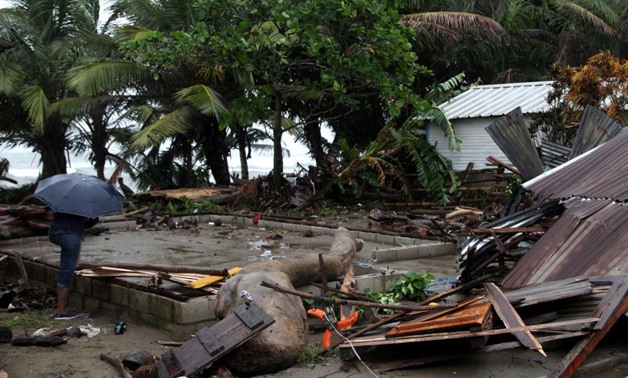
People look at what is left of their home in Nagua. REUTERS/Ricardo Rojas
MEXICO CITY - 9 September 2017: Hurricane Irma’s deadly tear through the Caribbean will hobble the region’s multi-billion dollar tourism industry for months, just as hotels, airlines, and cruises were gearing up for the region’s peak winter season.
As one of the most powerful Atlantic storms in a century, Irma has killed 21 people, leaving hotels, airports and other buildings damaged or flattened across prime vacation islands such as St. Martin and Barbuda. On Friday, it hurtled north of Cuba toward Florida.
Jack Richards, president of U.S.-based tour operator Pleasant Holidays, said it may be well into next year before the local tourism industry begins to normalize, costing it billions in lost business. The region’s busiest travel season runs from mid-December to Easter, when Americans, Canadians and Europeans leave behind snow and cold for the warm, turquoise Caribbean waters.
“Can this be repaired in time? The infrastructure to rebuild these countries simply isn’t there,” he said. “This is just massive.”
Just a few days after Irma razed the first islands, Richards said his bookings have already dropped for the Caribbean, his company’s second-most popular destination worldwide for U.S. tourists.
More than 26 million international tourists were expected this year in the Caribbean, the World Travel and Tourism Council (WTTC) projected before Irma hit.
In 2016, foreign visitors spent $31 billion in the Caribbean and were expected to spend an additional 5.3 percent in 2017. The WTTC estimates that in 2016, travel and tourism contributed $56 billion in gross domestic product.
“Any disruption in the tourism industry is a disruption of our livelihood,” Caribbean Tourism Organization (CTO) spokesman Hugh Riley said.
Officials across the islands have struggled to gauge the scope of destruction, after Irma knocked out electricity and cell phone service, and forced airports to close.
The trouble may not yet be over for the Caribbean, with Hurricane Jose forecast on Saturday to pass as a powerful Category 4 storm close to the same group of islands that were trashed by Irma. The hurricane season is set to run for several more weeks.
As of Friday afternoon, the U.S. Virgin Islands Department of Tourism was urging visitors to stay away from St. Thomas, where four people died in the storm and where the airport remains closed to comercial traffic. The St. Croix airport was slated to reopen on Friday.
The 150-room Windward Passage, an upscale hotel overlooking the St. Thomas harbor in the U.S. Virgin Islands, plans to close for six months, it reported to the Department of Tourism.
‘HOW OUR PEOPLE EAT’
On the tiny island of Barbuda alone, home to about 1,800 people and reef-lined beaches, preliminary damage estimates top $100 million, Riley said. Some 95 percent of the island’s buildings were destroyed.
Cruise lines, tour operators and airlines have scrambled to accommodate tourists or postpone plans. Royal Caribbean Cruises , Carnival Cruise Lines and Norwegian Cruise Line each canceled several of their Caribbean-bound cruises through the weekend and rerouted others to avoid sailing through the storms’ dangerous paths.
European tour operator TUI said it had evacuated its Florida customers to hotels in inland Orlando, and brought vacationers in Cuba to shelters.
German tour operator DER Touristik said it would bus tourists arriving by cruise ship in Miami on Friday directly to shelters, and that ships would leave the harbor again before the hurricane hits.
Recovery efforts in hard-hit areas have so far proven difficult.
Rolando Brison, St. Martin’s director of tourism, said firefighters struggled to hose off sand dumped by the storm onto the airport runways, leaving nearly 3,000 tourists stranded. The airport remained closed on Friday.
“Tourism is the economy,” he said. “It’s how our people eat.”

Comments
Leave a Comment